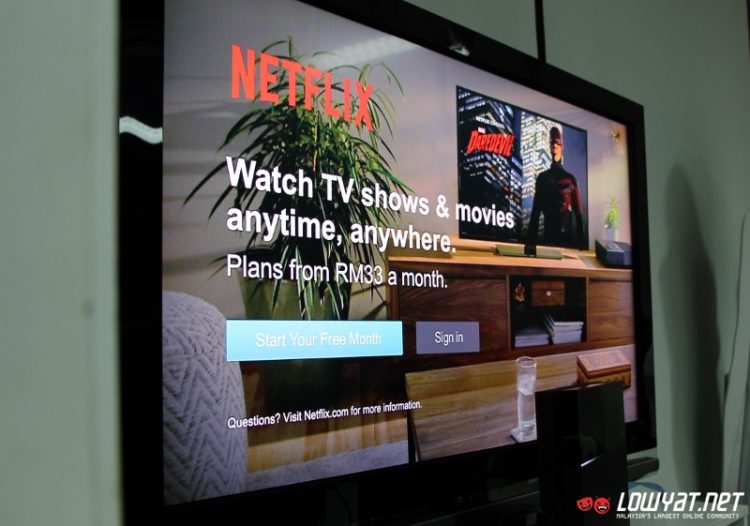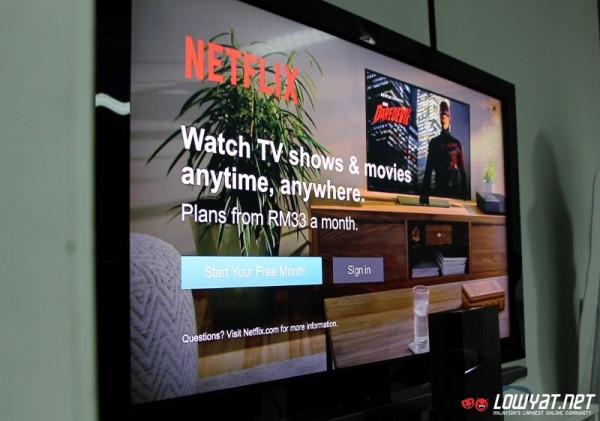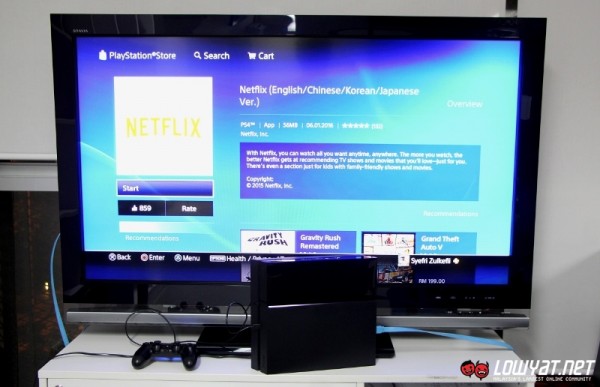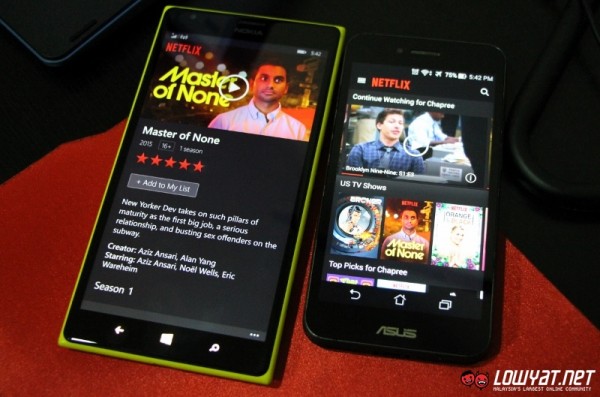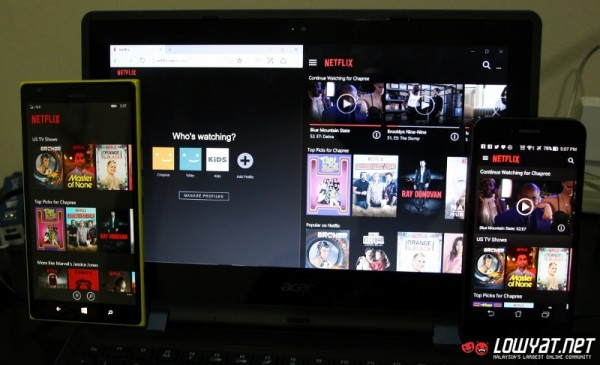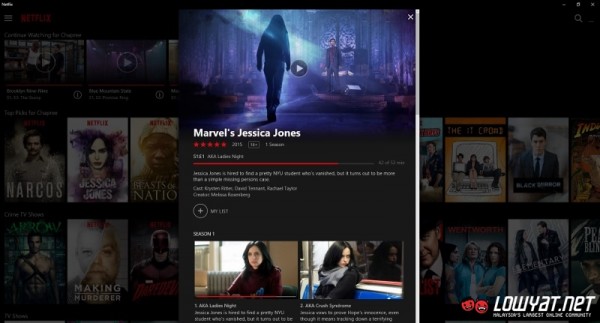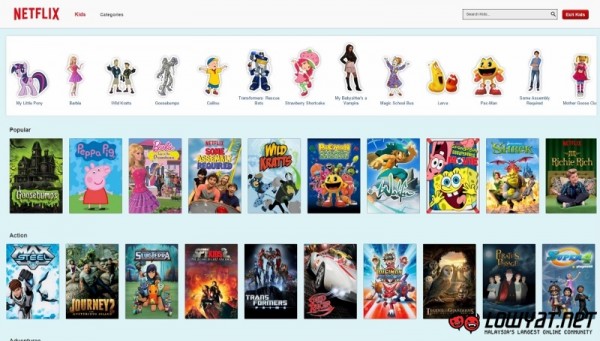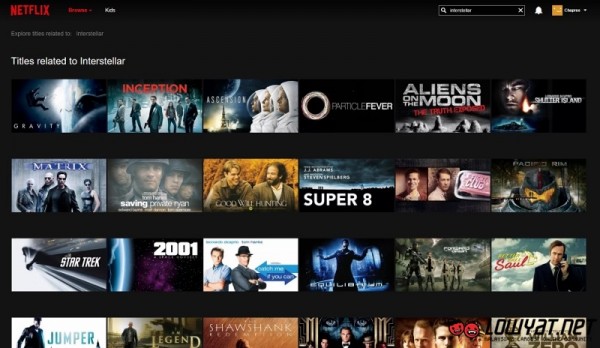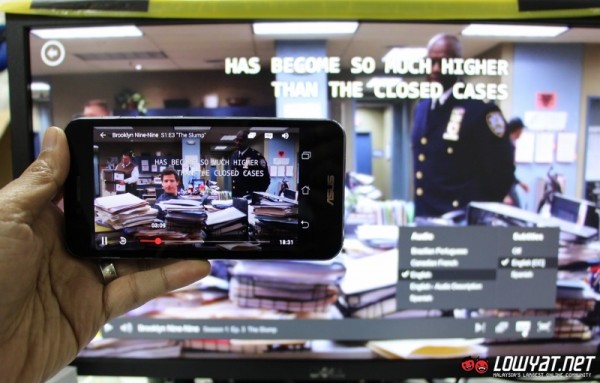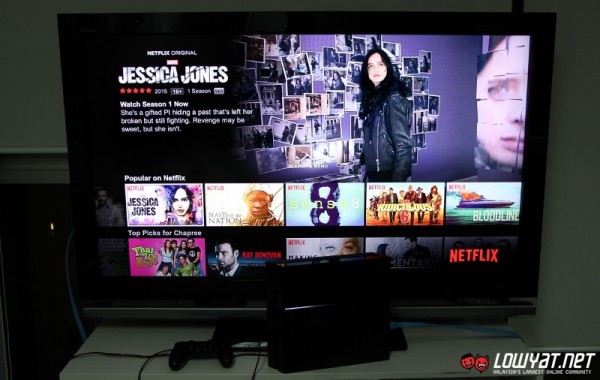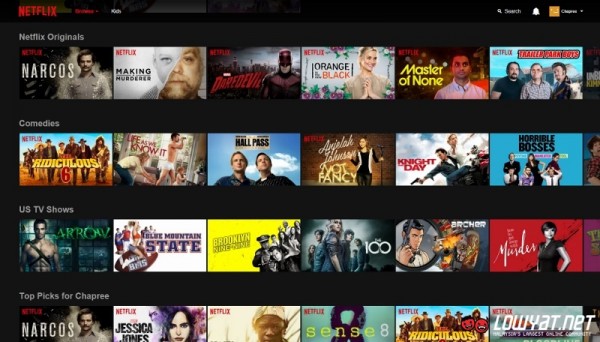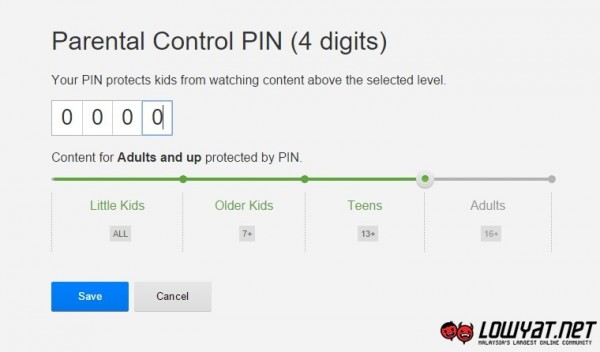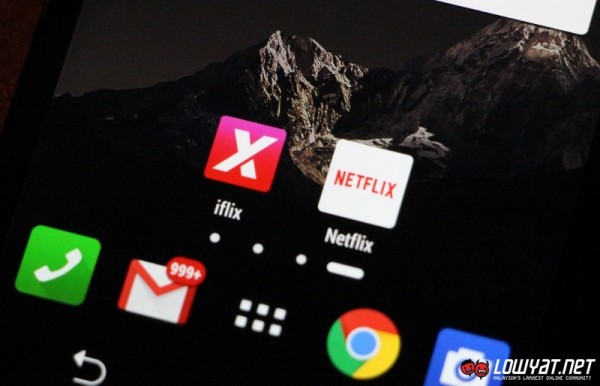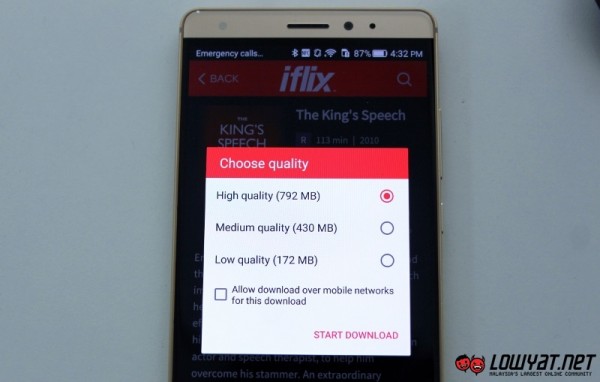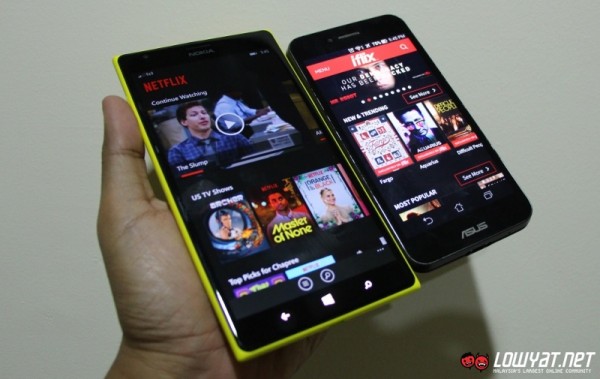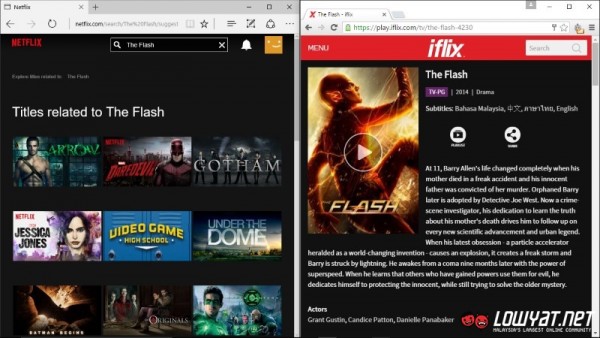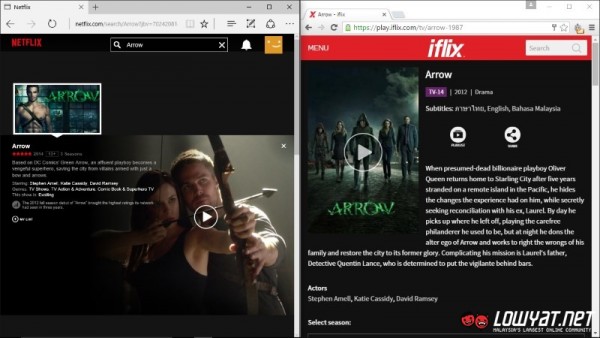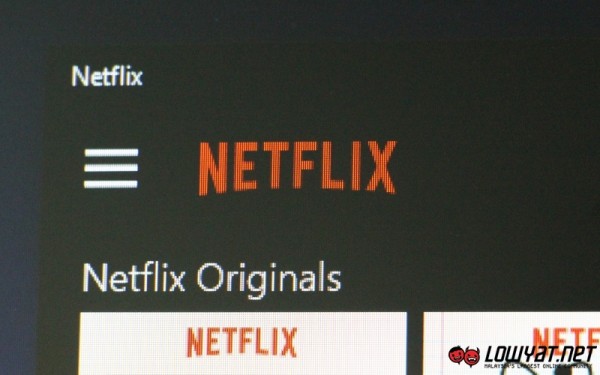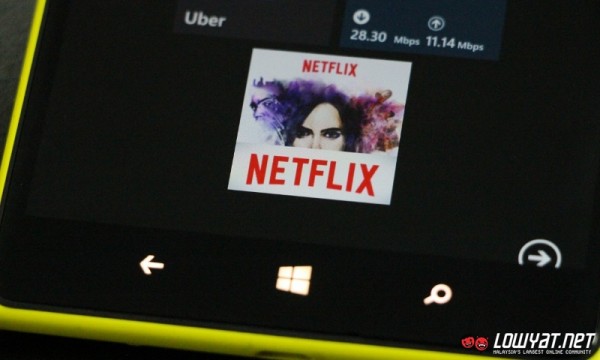Established in 1997, Netflix first made its name as an Internet-based DVD subscription service which then expanded itself into on-demand video streaming business in 2007. As DVD sales wound down with the advancement of the Internet, Netflix is now more known for its streaming business and has now become one of the biggest players in the industry with more than 69 million subscribers throughout the world.
That number will only get bigger from now on as the company’s streaming service has been expanded to include more countries than before including Malaysia. Jump in to check out what Netflix has to offer for your entertainment needs.
This hands on is based on Netflix experience through Google Chrome and Microsoft Edge web browser as well as Android, Windows Phone 8.1, and Windows 10 apps.
REQUIREMENTS
In general, consumers are able to enjoy Netflix through various types of devices: desktop PCs, laptops, tablets, smartphones, game consoles, certain media players, and even selected Internet-enabled TVs. Depending on the device, consumers are free to view Netflix contents through a web browser (not mobile browsers though) or dedicated Netflix apps.
The quality of playback on Netflix is mainly determined by three factors: subscription tiers, quality of Internet connection, and viewing platform. As per our previous report, the service’s subscription tiers is divided into three as shown below:
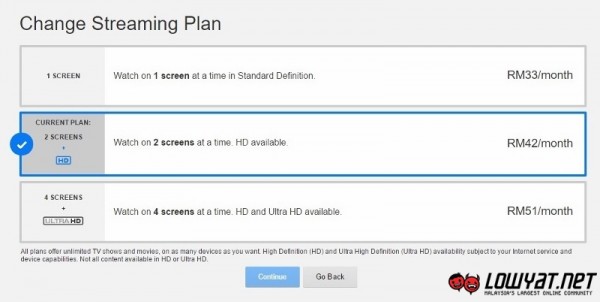
According to Netflix, the minimum speed required to stream content from the service is 0.5 Mbps. Obviously, this requirement gets higher as users increase the stream quality which can be as high as 25Mbps for 4K content. Hence, for users who want to enjoy Netflix at 4K resolution on their TV without restricting other members of their households to view Netflix at the same time, they might want to consider having ultra-fast broadband connections, such as Maxis 100Mbps Home Fibre Internet.
As for viewing platforms, it pretty much depends on where you watch Netflix. For example, the Google Chrome, Mozilla Firefox and Opera browsers maxes out at 720p while Microsoft Edge and Internet Explorer (yes, IE!) as well as Apple Safari support up to 1080p. On the other hand, Windows 8 and Windows 10 apps for PC can stream up to 1080p as well.
On the Netflix mobile app, Android and Windows Phone apps are apparently limited to 480p with the exception of selected devices. Handheld game consoles such as PlayStation Vita and Nintendo 3DS are also limited to 480p while their bigger brothers such as the PlayStation 3, PlayStation 4, and Nintendo Wii U support 1080p. To view contents at 4K resolution (wherever applicable), one needs a compatible TV, Blu-ray player, or media players.
USER INTERFACE
The basic navigation of Netflix is generally similar on all platforms, including web browsers. When users log into Netflix, they will be asked to choose which profile they would like to use for viewing. The service allows up to five individual profiles for each account which has its own personalized content recommendations, playback history, and lists.
Once users get to the main page, they can see a list of contents that they have yet to finish watching which are synced across all devices that they use to access Netflix. On the same page, there are also a list of contents divided according to their genres as well as a special list that is based on the user’s viewing preferences.
From there, users can learn more about each content by clicking on the pull down menu on its icon or choose to play the content immediately. On the Windows 10 app, the content description and episode list will pop up when users click on its icon.
On the upper left side of the screen, the Browse pull-down menu (hamburger menu for mobile apps) allows users to list contents based on genres. Interestingly, the menu somehow has a separate section for TV series but not movies. Additionally, there is also a link that allows users to access a separate children-friendly section on Netflix.
Another way that users can navigate through Netflix is through its search box that accepts content titles, people or genre as keywords. One interesting aspect of the search capabilities within Netflix that I noticed is how it handles searches that that are well-known but not available or accessible within the Netflix library.
As shown below, I used Christopher Nolan’s Interstellar as an example and while it is not available on Netflix, the search results suggests me to watch Gravity instead which is yet another well-known movie that revolves around a similar theme. Not to forget, there are also Inception and The Dark Knight Rises in the search results which were Nolan’s masterpieces as well.
While there are some slight differences between the playback interface on web browser and mobile apps as shown above, they do share similar elements. In addition to the playback slider, users can move to other episodes within a TV series directly from the playback screen through a drop down or a pull up menu depending on which platform you watching Netflix on. This is also applicable for audio and subtitle options.
Speaking about subtitles, users can actually change its appearance through their account settings which would be applied across all the devices that supports subtitles. On web browsers, Netflix has actually set up a special section that lists down contents that feature subtitles in English, German, French, and Spanish.
CONTENTS
Given the origin of Netflix, it is not surprising that the majority of contents on Netflix are Western series, documentaries and movies. One of the major concerns that potential Malaysian Netflix subscribers out there want to know is how much of the contents that the service has for our market.
For first time Netflix users like myself, it is rather hard to tell just from looking through its app or website. However, the differences are rather apparent once you take a peek at what the US market gets on their Netflix as shown below.
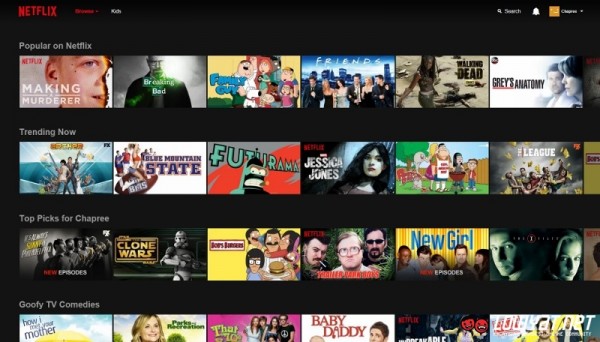
In fact, Malaysia’s actually only has around 15% of TV series and 11% of movies that the US market have according to this list. While the numbers might look rather small, the quality of the selection is still not too shabby.
For example, there is still an abundance of popular Netflix-exclusive contents available for the Malaysian market such as Marvel’s Jessica Jones, Marvel’s Daredevil, Beasts of No Nation, Sense8, The Ridiculous 6, Narcos and many more. There’s no House of Cards though but it might be because RTL CBS Entertainment (one of the channels on HyppTV) has the rights for it in Southeast Asia.
Meanwhile, Netflix’s customer service has stated that there is no censorship for its contents in Malaysia. While this might be a great news for many consumers out there for obvious reason, I believe some might be concerned about it especially parents. Worry not, users are able to activate PIN-based parental control and set a content filter according to age ratings in their Netflix account settings.
NETFLIX VS. HOMETOWN HERO, IFLIX
Obviously, one of the many questions and comments that we immediately see everywhere when Netflix announces its arrival in our shores is how does the Malaysian-based video streaming service iflix compare against the well-known service from US. Well, they are plenty of things that set them apart for sure even though their interfaces might seem alike.
For starters, the iflix experience is only available through web browser and Chromecast as well as Android and iOS apps for the time being as opposed to Netflix, which also includes game consoles and TVs. Additionally, iflix is also not available in HD just yet, while one can experience Netflix at up to 4K resolution with the right Internet speed and equipment. If you’ve got a high-speed fibre connection either from Maxis or even TIME, you might be one of the few in Malaysia to be able to enjoy quality 4K content.
Then again, iflix has offline viewing feature on its mobile apps and is way more affordable than Netflix, where an entire year’s subscription of iflix costs less than four months of Netflix’s basic subscription. Heck, you even get iflix for free if you are a UniFi subscriber. Furthermore, iflix doesn’t require payment details for users to begin their 1-month trial unlike Netflix which might be a hassle for some.
How about contents between the two services? Well, it is slightly hard to compare in detail since both services offer thousands of hours of content for consumers to enjoy but generally, I reckon that it mainly depends on what kind of contents that you are looking from them.
As mentioned earlier, the contents on Netflix in Malaysia are dominated by English shows and movies, while iflix offers a substantial mix of Filipino, Chinese, Japanese, Korean, Malay, and Tamil contents alongside English content. At the same time, iflix offers a number of contents that are not available on Netflix in Malaysia (for now, at least).
For example, iflix features several movies from the Marvel Cinematic Universe (MCU) such as Iron Man, Iron Man 2, Thor, and Captain America: The First Avengers. The MCU movie set is further complimented by its TV equivalents such as Marvel’s Agents of S.H.I.E.LD, and Agent Carter.
Several other notable TV series and movies that are available on iflix but not on Netflix for Malaysian viewers include Mr. Robot, Arrow, Friends, The Big Bang Theory, Family Guy, The Mentalist, Minority Report (both TV series and movie), 12 Years A Slave, Now You Can See Me, and many more.
Despite having only around 15% of TV series and 11% of movies that are available in its US library, Netflix for Malaysian viewers still have a significant number of contents that are not on iflix. As pointed out earlier, its exclusive contents are well known to many but there are also titles such as Archer, Blue Mountain State, Brooklyn Nine Nine, Better Call Saul, How To Get Away With Murder, The IT Crowd, Suits, Inception, Knight and Day, Pulp Fiction, From Dusk Till Dawn, Fight Club, and others.
However, let’s not forget both services still have identical content, which includes Arrow, Black Sails, Elementary, Gotham, Penny Dreadful, Ray Donovan, Superman Returns, The Godfather I & II and several others. Here, Netflix and its HD as well Ultra HD capability offers an advantage in terms of viewing experience over iflix although the users are able to view content on iflix on up to 5 devices at the same time as opposed to Netflix which maxes out at 4 simultaneous devices.
CONCLUSION
Foundation-wise, there is no doubt that Netflix is standing on solid ground. The UI is easy to use and almost consistent across all devices. The fact that the service can be enjoyed through various devices with resolutions of up to 4K make it attractive as well.
Meanwhile, Netflix’s monthly subscription fee is much higher than its competitors in Malaysia. At the same time, the contents that are available to Malaysian viewers is just a fraction of its massive US library due to territorial licensing – although the amount is not exactly bad at 174 TV series and 509 movies.
That being said, Netflix has stated that it is committed to unlock and deliver more content to its customers outside of the US. It might be a tall order but nevertheless, it is not that they have the choice either as Netflix need to continuously grow its contents in order to sustain its new global expansion.
All in all, the choice to have Netflix as part of your entertainment repertoire might boil down to two factors: the amount of content that you love available on the service and how willing you are to pay its monthly subscription fee. As the new kid on the block, the hype is really strong right now – with some even saying Netflix will spell the death of current digital content services – but we personally think Netflix will only make things more interesting in the industry. There’s nothing like a little competition to spice things up, isn’t it?
Disclosure: this article was sponsored by Maxis. Start streaming the latest and best TV shows on 100Mbps Maxis Home Fibre, the fastest unlimited home fibre service. Call 1800-82-1123 now.

